
Software Development
“Technology is best when it brings people together.” - Matt Mullenweg, Social Media EntrepreneurCustom Web Application Development
We’ve written hundreds and hundreds of thousands lines of Code. We can Develop for you, web applications with responsive design and cross-browser compatibility.
Dedicated Software Development Teams
Do you wish for a complete control of every aspect of the development process? Syncode offers the Dedicated Software Development Team service. Reinforce your team with our Development Teams!
Software Enhancement & Modernization Services
Today, Technological Developments are fast, as well as in the field of Software Systems, in particular. Let us bring you up to speed and upgrade your business by replacing outdated old Systems with Advanced Software Solutions.
How to build great Web Applications?
How do we do it?
Share with us your needs, the desired functionality, the business methods used and we can create your software solutions.
Each new engagement begins with a discussion of the short-term and long-term desires for your project.
We use and believe in the Scrum framework so that everyone can work together innovatively and productively to solve complex problems.
Let us know your goals and understand your existing software to ensure the success of the project.
Syncode works with you to create a development plan that meets your goals, schedule and operating budget.
By combining the most appropriate development techniques and methodologies with the best field specialization and project management tools, we ensure the project schedule.
We regularly deploy your application in a test environment. When it comes time production deployment, there will be no surprises as the software has been fully tested.
We provide maintenance and software upgrades to enable your application to stand the test of time and run your business without interruption.
The protection of intellectual property rights is essential for any business. Syncode understands this fact and is able to guarantee that all your information, data, processes are secure and well protected.
Our Principles & Advantages
Dedication & Confidentiality

Our main desire is that our customers are completely satisfied with every feature we are developing, so the cooperation with them is very close and continuous so that they are strongly possessed by the feeling of security.
As we get to know and fully understand the unique needs of your project and of course your business, we can better anticipate the next steps and guide you to the the right direction, so that your project is delivered on time. Your idea and vision are safe in our hands, “Confidentiality” is our motto.
Experience & Differentiation

Although our developers are highly experienced in software development in web technologies, they also differentiate for their following qualities. They have a positive attitude and are really interested in the success of your product. They have superior communication skills that are directly related to development skills. They have amazing self-learning skills. They have worked with a variety of technologies long enough to become experts and are proficient with many others. Another great quality is their ability to help others improve.
Finally, our team of developers does not just complete the tasks assigned to it, but takes into account the wider impact on the system and the user experience as a whole. Whether you are improving outdated code, or creating new, innovative, responsive applications, our team has the knowledge and experience to achieve any project goal.
What Project Management Methodologies we use
Agile – collaboration to repeatedly deliver whatever works
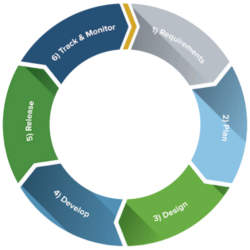
Agile is a set of principles for software development rather than a methodology. Below are four values as described in the principles appearing in the Agile Manifesto.
- Individuals and interactions over processes and tools;
- Working software over comprehensive documentation;
- Customer collaboration over contract negotiation;
- Responding to change over following a plan.
When we talk about an Agile project management methodology, what we describe is a flexible, iterative design and development process. Agile projects are characterized by a series of tasks that are captured, executed and adapted according to the situation, and not by a planned process. Being agile helps teams respond to the unpredictable through gradual, repetitive work processes.
What characterizes agile projects is the series of tasks that are captured, executed and adapted to the situation, and not the pre-planned process. Agility helps teams respond to the unpredictable through gradual, repetitive work processes.
Agile as a set of principles is Big Daddy. Agile tends to be used as an umbrella term used in Scrum, eXtreme Programming (XP), Kanban and Scrumban. In Agile project management, you can use any of these versions of Agile (Scrum, eXtreme Programming, Kanban, Scrumban).
Scrum – allowing a small, cross-functional, self-managed team to deliver quickly
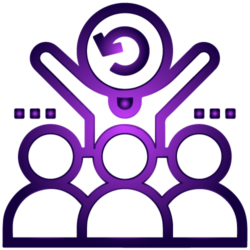
Scrum is a project management methodology that proposes principles and process for improving delivery. In the context of software development, the Scrum methodology is one of the most popular and simple frameworks for the practical application of Agile principles.
Scrum’s main goal is to optimize communication, teamwork and development speed. When you hear sprints, scrums, backlogs and burndowns, they are probably referring to Scrum or some of its derivatives.
Scrum can not be considered as a project management methodology, but a framework for the continuous development and maintenance of complex products. Scrum defines a simple set of roles, meetings (called Scrum ceremonies), and tools for efficient, repetitive, and gradual delivery of valuable, shippable functionality.
Waterfall – complete project planning, then execution in phases
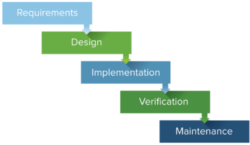
Waterfall methodology often referred to as SDLC (Software Development Lifecycle) is a project management methodology with a simple approach that values design; you just make a good plan and do it.
At the beginning, before any work begins, the requirements are completely defined, “At the top of the waterfall”. Then the work descends from the phases of the project, as water descends from a waterfall. In a Waterfall model, each phase is completed before the next begins. There is no overlap in the phases. Usually, in a waterfall approach, the result of one phase acts as the input for the next phase sequentially.
After program approval, there is minimal room for customizing it, unless the changes are really necessary, and change requests are required.
Due to the approach of a single circle, in a Waterfall project, there is minimal room for reflection and difficulty in reviewing and adapting once something is completed. Once you get to the test phase, it is very difficult to go back and change something that was not well designed at the idea phase.
Waterfall is considered an ineffective and passive traditional project management approach. However, the waterfall can be a useful approach in cases where the requirements are stable, well documented and clear, the technology is understandable and mature, the work is short and there is no added value from “going Agile”. The waterfall is a good approach for a more predictable end result for your budget, schedule and range.
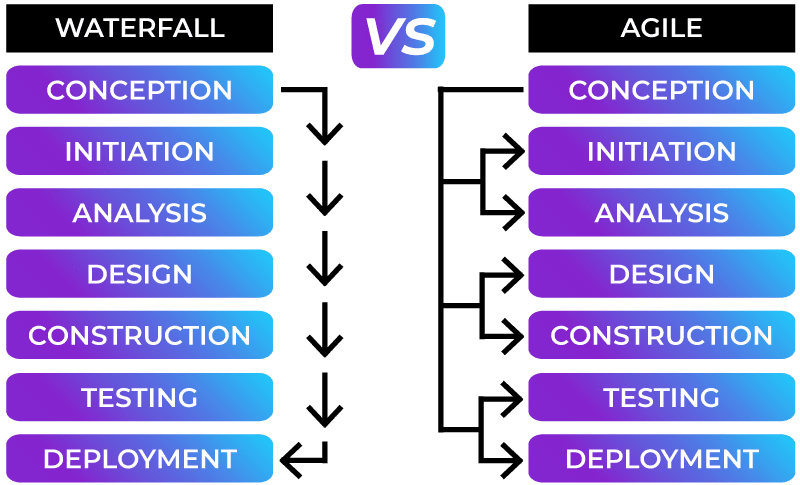
What Project Architecture do we use?
The Onion Architecture
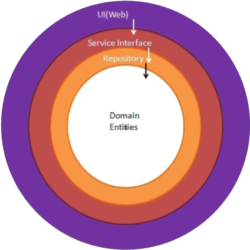
The web applications we develop are mainly based on the “onion architecture”. This architecture does not raise fundamental issues of tight coupling and separation of concerns, like most traditional ones. Onion Architecture provides a better way to build applications for better testing, maintenance and reliability.
Onion Architecture uses the concept of layers, but differs from 3-tier and n-tier architectures as it addresses the challenges, that these architectures face, and provides solutions to common problems. Onion architecture uses Interfaces so that its’ layers can interact to each other.
Ιnversion of control is the principle on which Onion Architecture is based. It consists of multiple concentric layers that interface with each other towards the core that represents the domain. Classic multi-tier architectures depend on the data layer , onion architecture depends on the actual domain models.
Onion Architecture is undoubtedly biased toward object-oriented programming, and it puts objects before all others. At the center is the domain model, which represents the business and behavior objects. Around the domain layer are other layers, with more behaviors.
Onion architecture has four levels:
- Domain Entities Layer
- Repository Layer
- Service Layer
- UI (Web/Unit Test) Layer
These layers are towards to center. The center part is the Domain entities that represent the business and behavior objects. These layers can vary but the domain entities layer is always part of the center. The other layer defines more behavior of an object.
Advantages of Onion Architecture
There are several advantages of the Onion Architecture, as listed below.
The Onion Architecture is an evolution of the Ports and Adapters Architecture. And in here we add layers and some extra ideas.
In short applying the Onion Architecture means:
Why should you hire a Team of Dedicated Software Developers?
Advantages of Syncode Dedicated Development Teams

Top-Talent Engineers

Transparent Pricing and Timelines

Efficient and Accessible Service

Customer-Focused Culture

Rapid Ramp-Up Times

